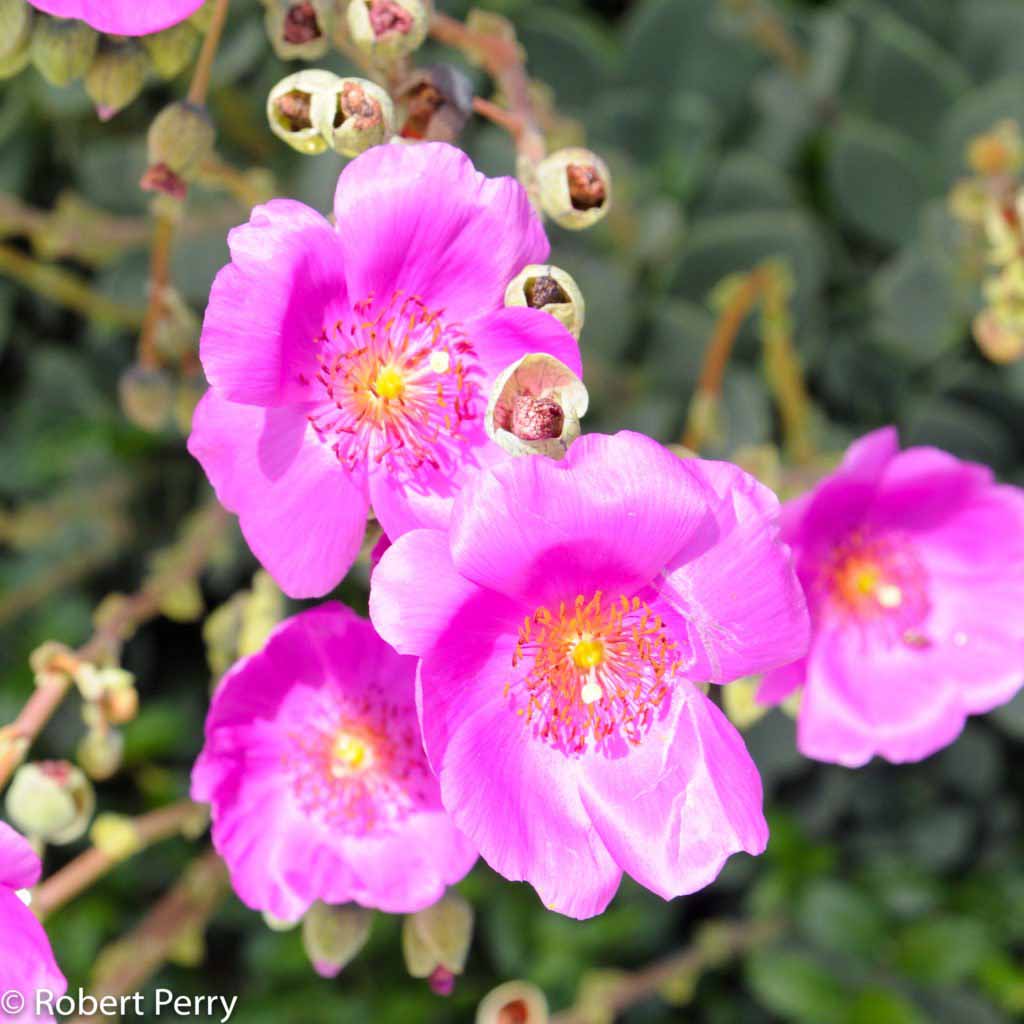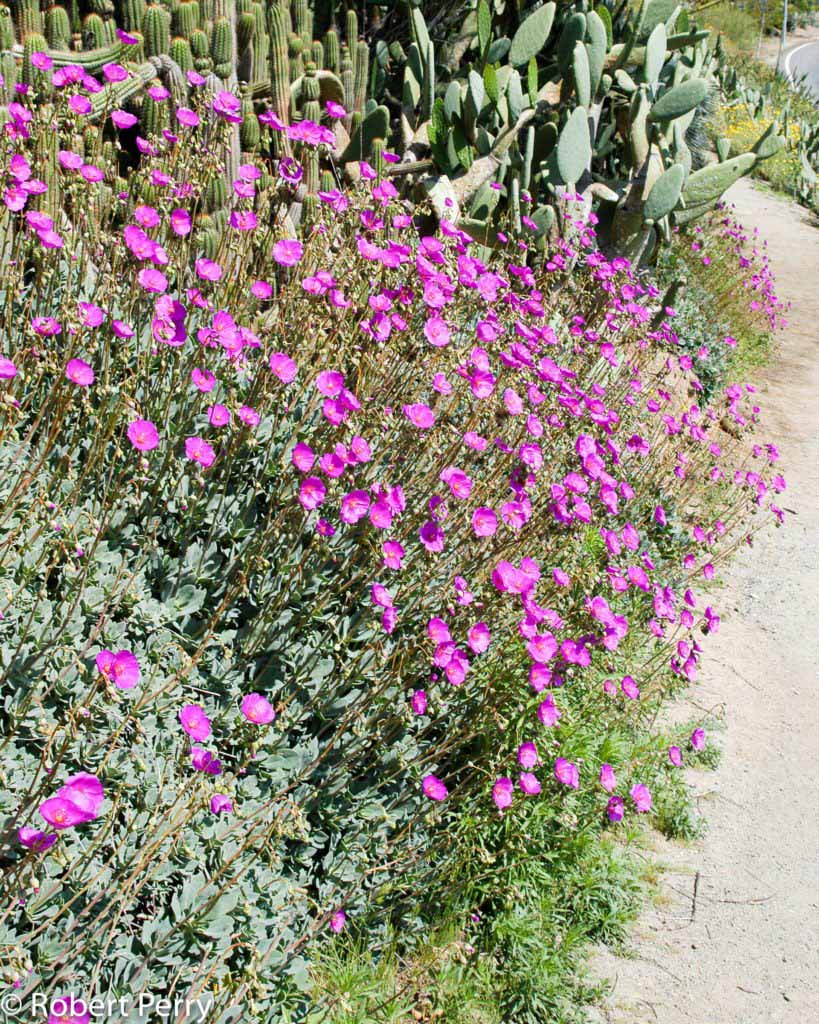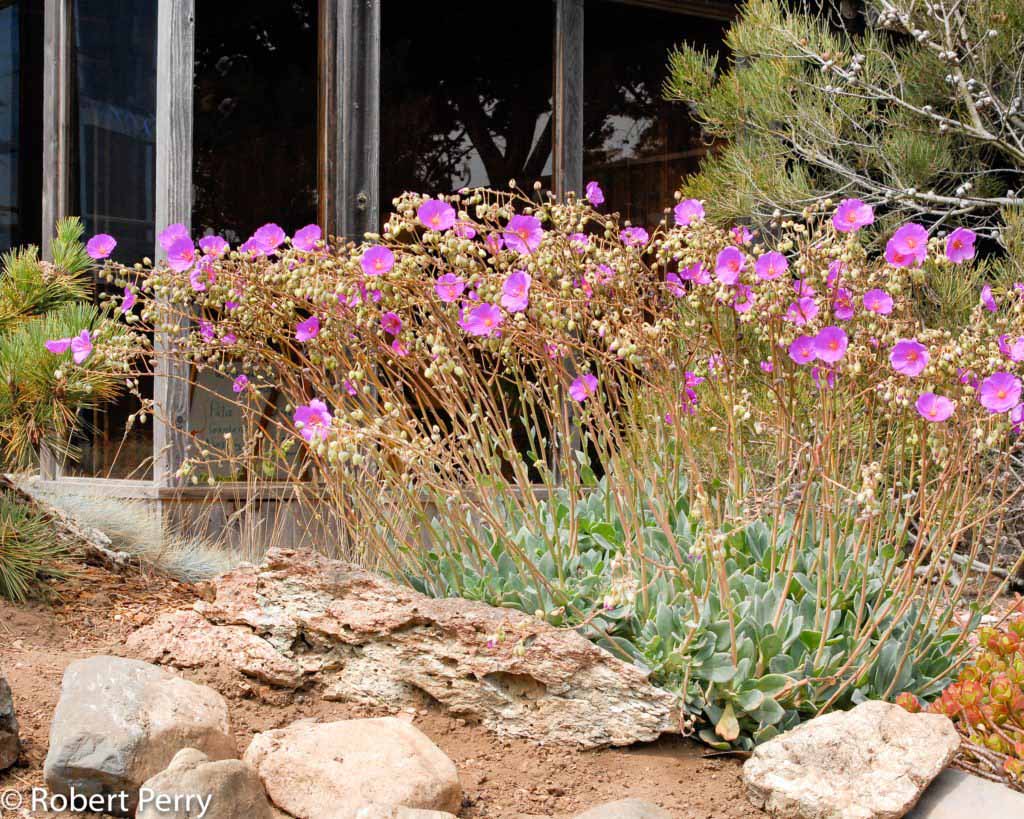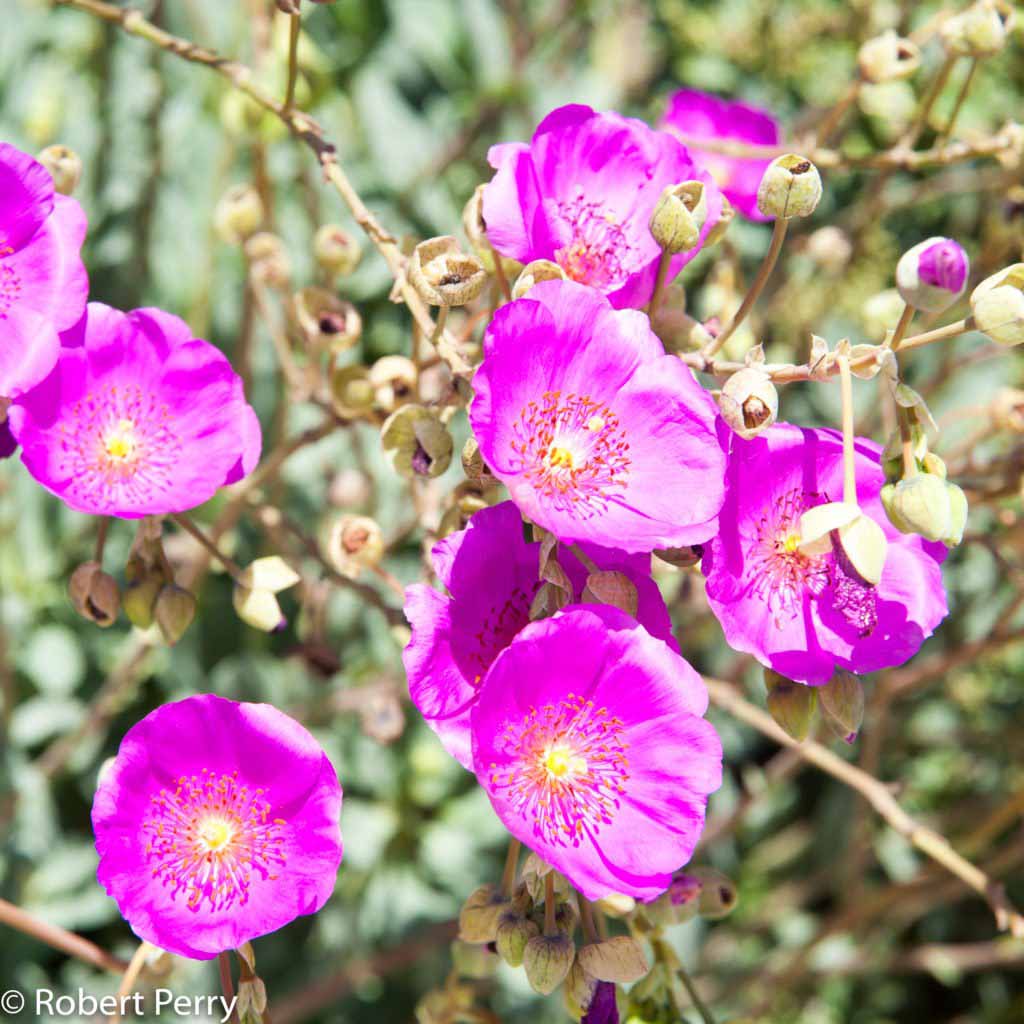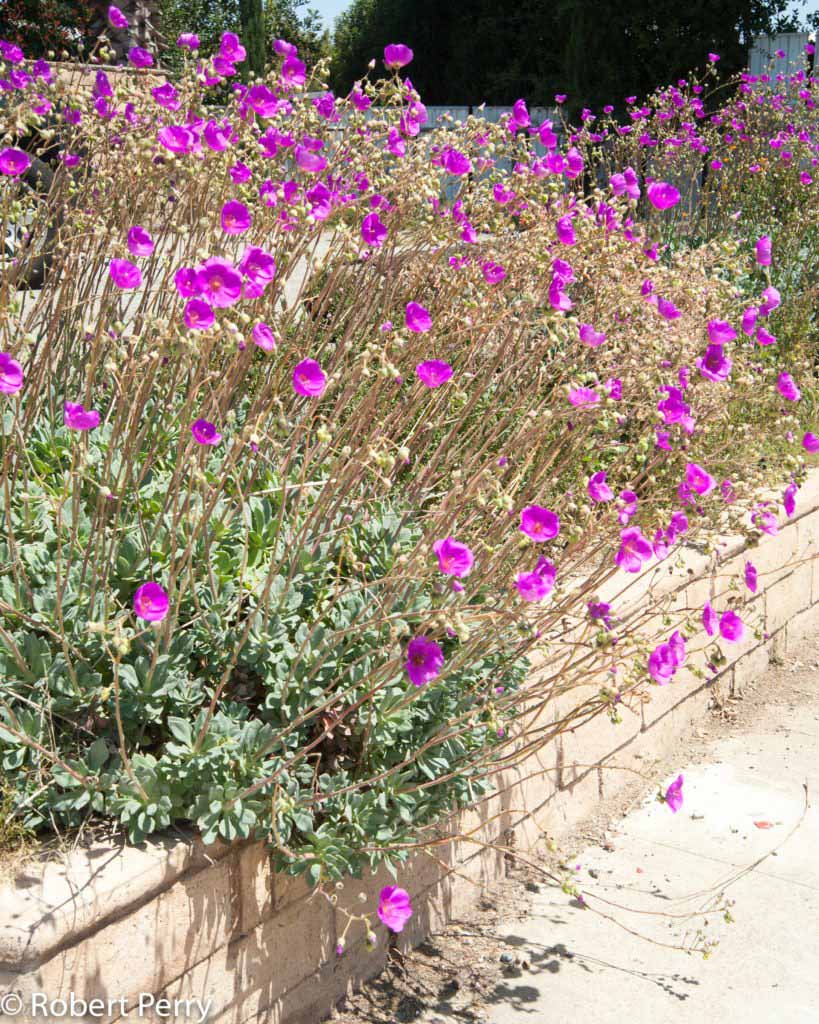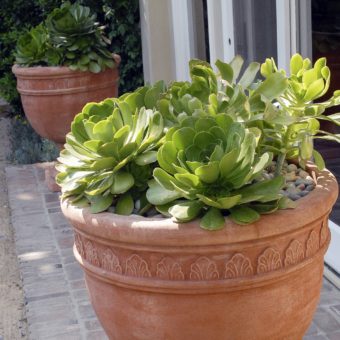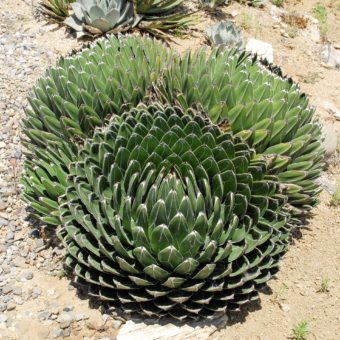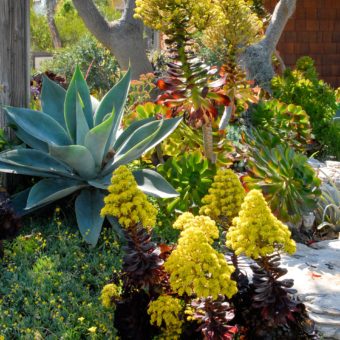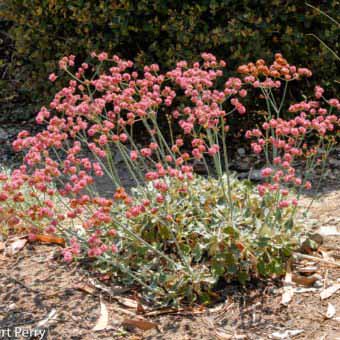Rock purslane is a small mounding succulent with thick blue-green foliage that grows to 12 in. high and spreads 2-3 ft. across. Colorful and intense purple-magenta flowers to 2 in. dia. develop on flexible stems from mid to late spring and intermittently into summer.
Native to Chile, Rock purslane belongs to a small group of succulents with colorful flowers and a tolerance for arid conditions. It is the only species commonly found in cultivation in California where it is a popular accent plant in rock gardens and among other succulents. Both foliage and flowers offer a contrasting character to most plants, particularly with its intense purple-magenta flowers.
This is a short-lived perennial that grows well for 2-3 years. It does best in well-drained soils and away from the hottest sun. It flowers best with regular water through the end of spring and less during summer.
